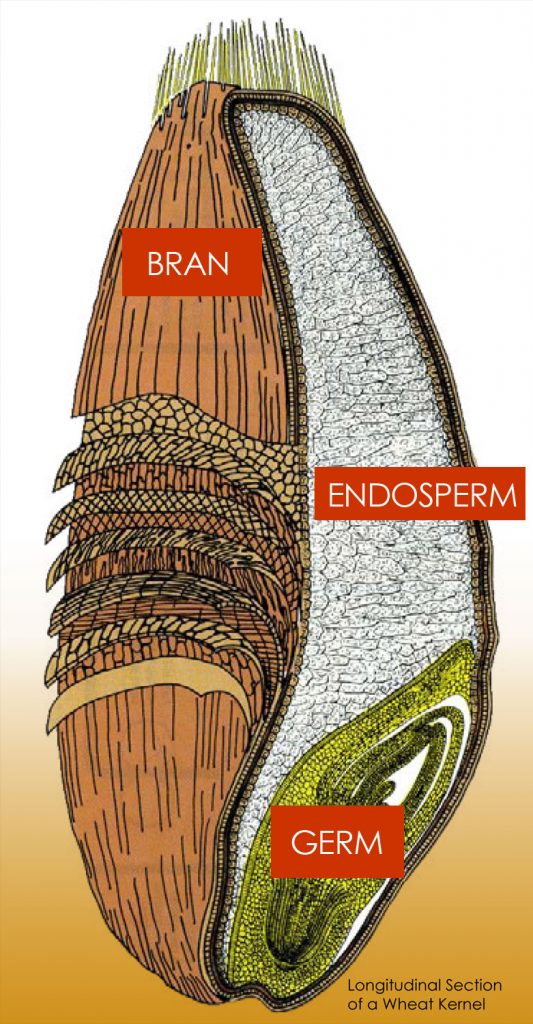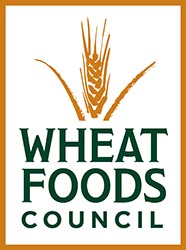Sometimes called the wheat berry, the kernel is the seed from which the wheat plant grows. Each tiny seed contains three distinct parts that are separated during the milling process to produce flour. Download PDF

Endosperm
About 83 percent of the kernel weight and the source of white flour.
Bran
About 14 1/2 percent of the kernel weight. Bran is included in whole wheat flour and can also be bought separately.
Germ
About 2 1/2 percent of the kernel weight. The germ is the embryo or sprouting section of the seed, often separated from flour in milling because the fat content limits flour’s shelflife.
Whole Grains
Whole grain products are made with the whole kernel of grain. The bran (outer layer) contains the largest amount of fiber (insoluble), B vitamins, trace minerals and a small amount of protein; the endosperm (middle layer) contains mostly protein and carbohydrates along with small amounts of B vitamins, iron and soluble fiber; and the germ (inner part) is a rich source of trace minerals, unsaturated fats, B vitamins, antioxidants, phytochemicals and a minimal amount of high quality protein.
Enriched Grains
Enriched white flour is the finely ground endosperm of the kernel. Some of the nutrients that are milled out are replaced through enrichment. Slice for slice, enriched white bread as well as other enriched grain products, are a good source of iron and or B vitamins (thiamin, riboflavin, niacin and folic acid) as well as complex carbohydrates. Enriched grain products have over twice the amount of folic acid as whole wheat. Compare a slice of enriched white bread with 37mcg to a slice of whole grain bread at 17.5mcg.
Grain-based Foods
Provide complex carbohydrates – the best fuel for our bodies. These foods are often low in fat and contain fiber. Grain foods provide vitamins – especially the four key B vitamins (thiamin, riboflavin, niacin and folic acid) and iron. During the milling process, white flour is produced by removing the bran and germ portions of the wheat. Most (95%) products made from white flour are enriched. Whole grain foods are made with flour that contains all three parts of the kernel. Nutrition experts recommend that at least half of our daily grains come from whole grain products. The total number needed each day depends on age, gender and activity level.
Visit https://www.choosemyplate.gov/grains-group-food-gallery to see the specific amount of that food that counts as 1 ounce-equivalent of grain
